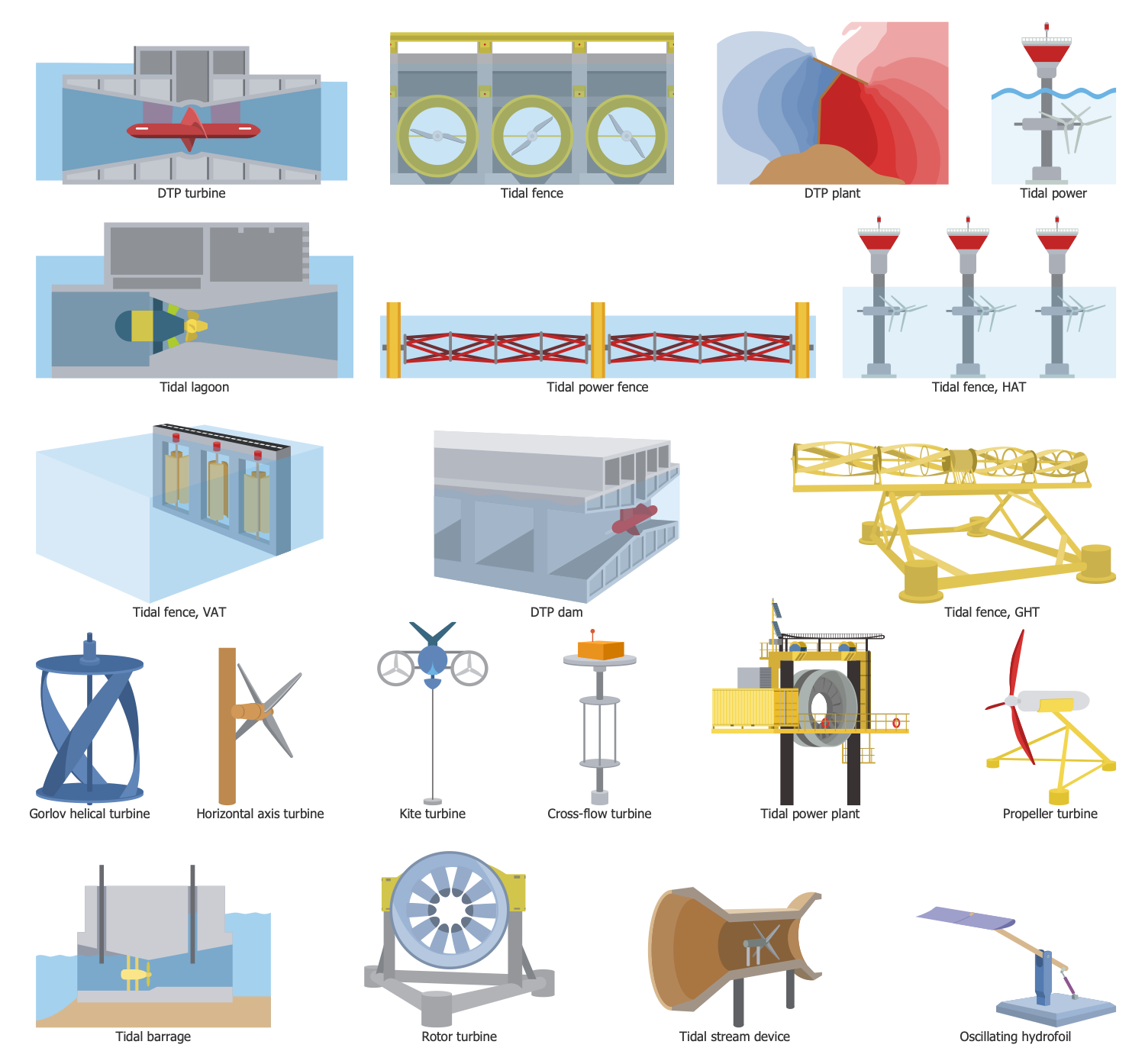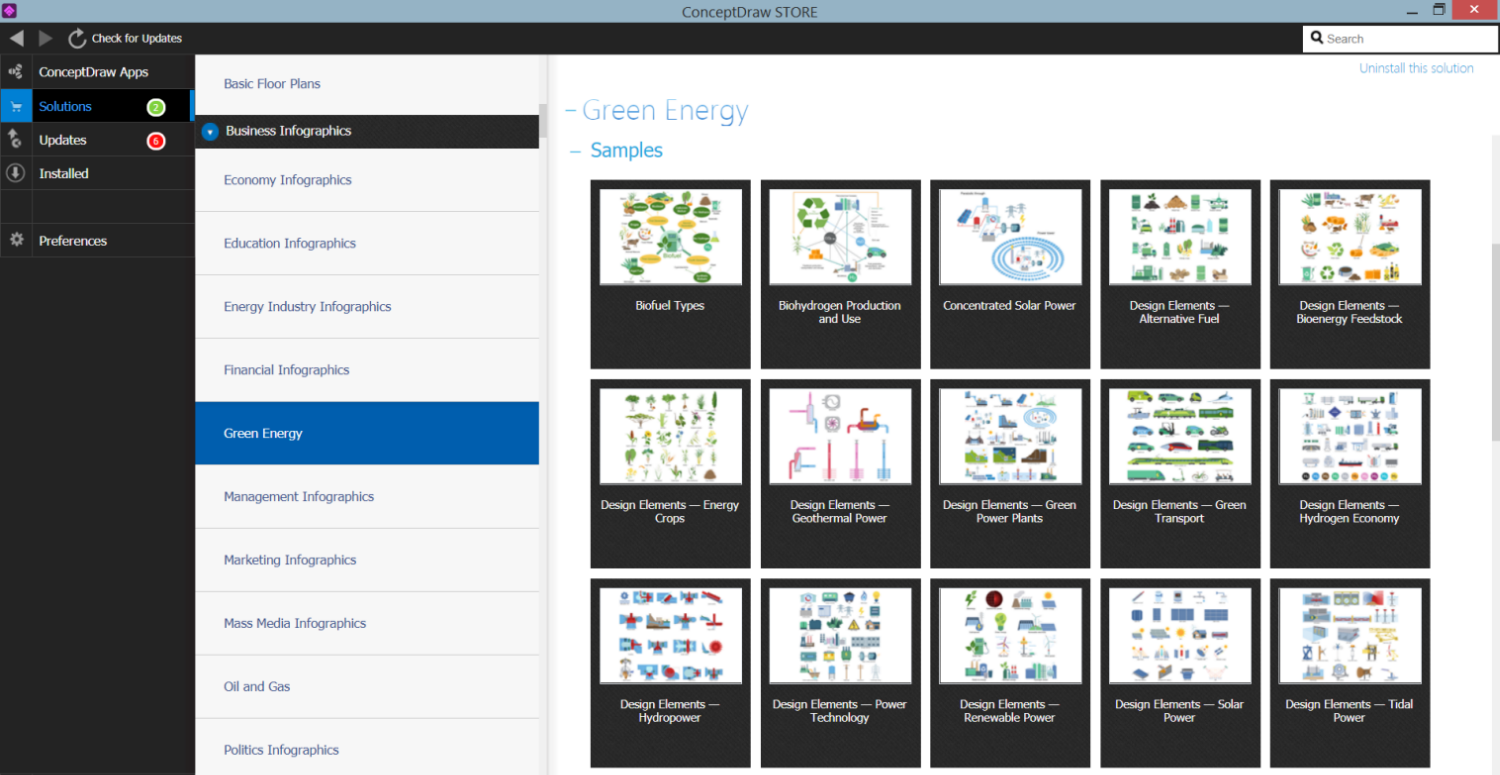Tidal Power
Tidal power is a kind of energy produced by the natural rise and fall of ocean tides and currents. These tides are caused by the gravitational interaction between the Earth, the sun, and the moon. The potential or kinetic energy of tide movement is captured and converted into useful forms of power like electricity using generators.
Tidal energy is a renewable, sustainable, clean, and environmentally friendly energy source. The energy derives from rapidly replenished natural sources, which don't produce greenhouse gases. However, suitable locations for tidal energy facilities are limited because tidal energy is captured in places with large differences in tidal ranges and currents. The areas of high and low tides suit the best, and also the areas where land is constricted, waterways become smaller and tidal currents become stronger like in straits and inlets.
The cycles of low and high tides are easy to forecast. Their fluctuations and unanticipated changes are rare and they are hardly affected by weather conditions. Therefore, predictability is a primary advantage of the tidal energy industry. Due to the predictability of tides, tidal energy is reliable, competitive, and has great potential. Another benefit of tidal power is its relatively high power output because water is denser than air.
However, the generation of tidal energy has a high cost and there are some additional difficulties because the availability of places with sufficiently high tidal ranges or flow velocities is limited. In this regard, the technological developments in the tidal energy area are aimed at decreasing economic and environmental costs, improvement of construction, and increasing power output.
More than 1000 years ago people began using falling water and tidal energy to turn waterwheels to mill grain. The spinning tidal turbines to create electricity were introduced in Europe and USA in the 19th century. Currently, they are also used along with tidal barrages, tidal fences, or tidal lagoons.
Tidal turbines are installed on the seabed where there is the most strong tidal flow, individually or in arrays. They contain blades that turn a rotor to power a generator. The energy captured from the current is then transmitted by underwater cables to the grid. Tidal turbines with blades of the same size as wind turbines are more expensive but can capture more energy. Water is denser than air, therefore tidal turbines generate more energy per unit area than wind. In addition, they are more robust. Usually, tidal turbines are smaller than wind turbines and more tidal turbines is required to produce the same amount of energy. Currently, in most cases, the groups or arrays of equipment are placed within the tidal stream. Tidal power arrays of varying sizes are installed in Scotland, France, Korea, China, Japan, Canada, and the USA.
However, the costs for construction, development, and manufacturing of tidal energy arrays surviving corrosive seawater, connecting them to the power grid, and maintenance are significant. Moreover, when tidal energy plants are distanced from the coast, additional investments are required to install lengthy undersea cables to transmit generated electricity.

Example 1. Tidal Power
The global population actively rises and its reliance on energy also grows, therefore the demand for power systems to provide clean energy resources also rises. Tidal energy is a great opportunity to increase the capacity of renewable power generation in the world to meet growing global energy needs. Currently, technological research to develop new methods allowing to lower the costs in this area are actively realized.
Tidal barrages are installed across an inlet of an ocean bay or lagoon to form a tidal basin where the turbines are located. The barrage includes sluice gates, which control water levels and flow rates. Both the incoming and outgoing tides are used in two-way tidal power systems to generate electricity.
In a tidal power system with a tidal fence, turbines are installed in a fence or row placed on the seabed. Tidal lagoons contain retaining walls to keep the incoming tidal water and embedded turbines to capture energy. Often they are placed along the natural coastline to continuously generate power as the tide changes.
Example 2. Tidal Power Library Design Elements
However, tidal power hasn't taken off a massive development and distribution because there are some concerns about its environmental friendliness and environmental impact. Being massive underwater structures, tidal energy facilities create electromagnetic fields from power cables and can change the flow field and water quality, its salinity, transparency, sediment levels, disrupting coastal ecology and harming marine life. Underwater noise produced by the turbines affects marine animal navigation and communication, and rotating turbine blades can hurt sea inhabitants. At the same time, the increased oxygen content is often fixed in water and improves its quality. Changing of gradient also benefits aquatic ecology. Currently, the engineers are working to improve tidal energy generation technologies, reduce the noise level and increase their energy production efficiency.
Succeed in designing visual infographics and diagrams about tidal power using ConceptDraw DIAGRAM charting and vector drawing software, Green Energy solution and Tidal Power library with a large variety of thematic vector design elements. This solution also helps to make an overview of all variety of renewable resources, their advantages, and achievements from their use.
Example 3. Green Energy Solution in ConceptDraw STORE
The Hydropower Infographics samples you see on this page were created in ConceptDraw DIAGRAM software using the drawing tools of the Green Energy Solution. These examples successfully demonstrate solution's capabilities and the professional results you can achieve using it. An experienced user spent 10-15 minutes creating each of these samples.
Use the powerful tools of the Green Energy solution to design your own Green Energy Infographics quick, easy and effective.
All source documents are vector graphic documents. They are available for reviewing, modifying, or converting to a variety of formats (PDF file, MS PowerPoint, MS Visio, and many other graphic formats) from the ConceptDraw STORE. The Green Energy Solution is available for ConceptDraw DIAGRAM users.

